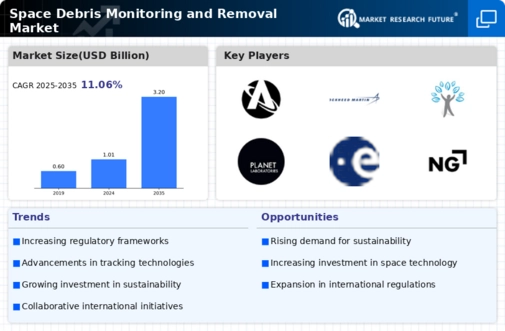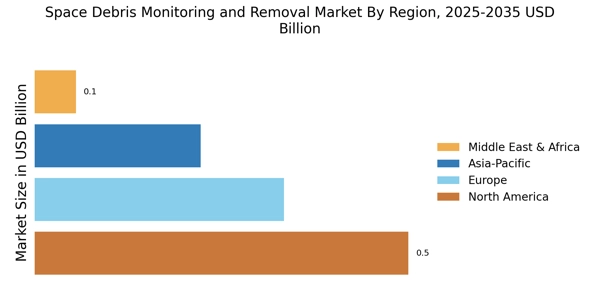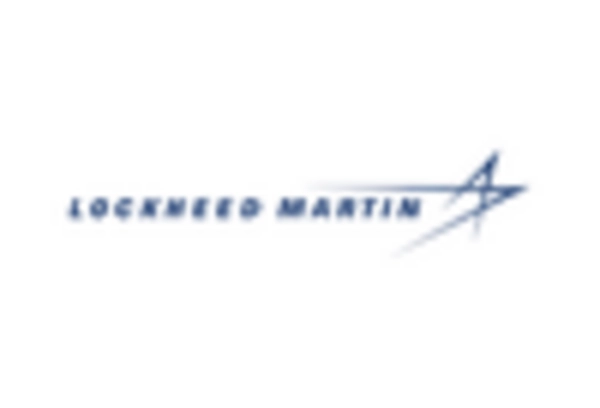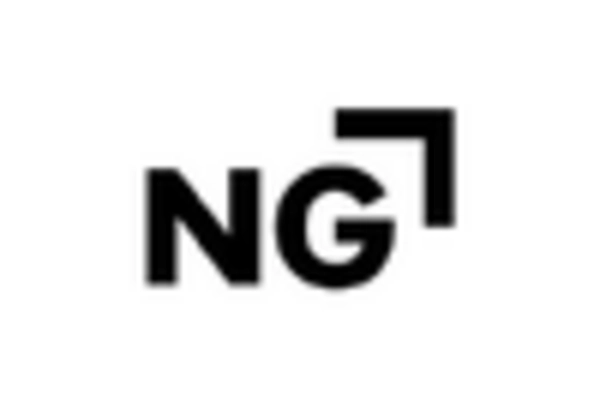Rising Satellite Launches
The increasing frequency of satellite launches contributes significantly to the Space Debris Monitoring and Removal Market. As more nations and private entities engage in space exploration and satellite deployment, the risk of space debris accumulation escalates. In 2025, the number of active satellites is projected to exceed 10,000, leading to heightened concerns regarding collision risks and operational safety. This surge in satellite activity necessitates advanced monitoring systems and debris removal strategies to ensure the sustainability of space operations. Consequently, stakeholders in the Space Debris Monitoring and Removal Market are likely to invest in innovative technologies and solutions to address these challenges, thereby driving market growth.
Regulatory Frameworks and Policies
The establishment of regulatory frameworks and policies is becoming increasingly influential in the Space Debris Monitoring and Removal Market. Governments and international bodies are formulating guidelines to govern satellite launches and debris mitigation practices. In 2025, it is anticipated that stricter regulations will be implemented, compelling operators to adopt responsible practices in space. These regulations may include mandates for end-of-life satellite disposal and debris tracking, thereby driving demand for monitoring technologies and removal services. As compliance becomes essential, stakeholders in the Space Debris Monitoring and Removal Market are likely to invest in solutions that align with regulatory requirements, ultimately shaping the market landscape.
Growing Awareness of Space Sustainability
There is a burgeoning awareness regarding the importance of space sustainability, which is becoming a pivotal driver for the Space Debris Monitoring and Removal Market. As the implications of space debris on future missions and satellite operations become more apparent, governments and organizations are increasingly prioritizing debris mitigation strategies. Reports indicate that the economic impact of space debris could reach billions of dollars if left unaddressed. This awareness is prompting investments in monitoring technologies and removal initiatives, as stakeholders recognize the necessity of preserving the orbital environment for future generations. The Space Debris Monitoring and Removal Market is thus positioned to benefit from this heightened focus on sustainability.
International Collaboration on Space Debris
International collaboration is emerging as a vital driver for the Space Debris Monitoring and Removal Market. Various countries and organizations are recognizing the need for cooperative efforts to address the challenges posed by space debris. Initiatives such as the Inter-Agency Space Debris Coordination Committee (IADC) promote information sharing and joint missions aimed at debris mitigation. This collaborative approach not only enhances the effectiveness of monitoring and removal efforts but also fosters a sense of shared responsibility among space-faring nations. As partnerships strengthen, the Space Debris Monitoring and Removal Market is likely to experience increased funding and resource allocation, facilitating the development of comprehensive debris management strategies.
Technological Innovations in Debris Removal
Technological advancements are playing a crucial role in shaping the Space Debris Monitoring and Removal Market. Innovations such as robotic arms, nets, and laser systems are being developed to effectively capture and remove debris from orbit. In 2025, the market for debris removal technologies is expected to witness substantial growth, driven by the need for efficient solutions to mitigate collision risks. These technologies not only enhance the safety of existing satellites but also facilitate the long-term sustainability of space activities. As research and development efforts continue to evolve, the Space Debris Monitoring and Removal Market is likely to see an influx of new players and solutions, further propelling market dynamics.


















Leave a Comment